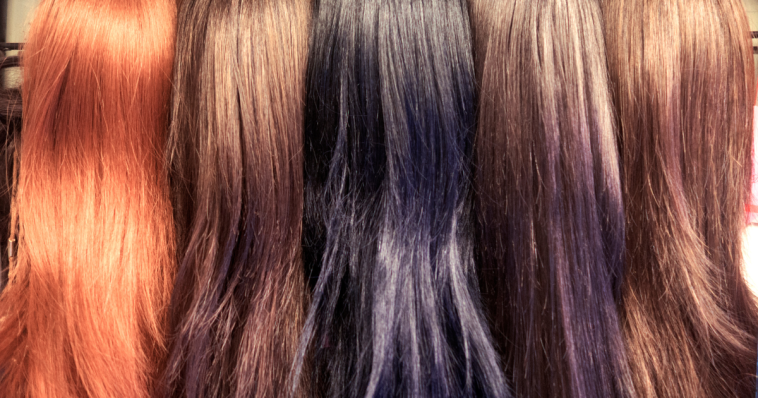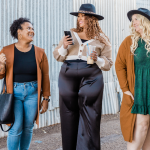Hair prosthesis is a viable treatment for hair loss, offering many individuals a boost in self-esteem and quality of life. However, one must know a few critical considerations before investing in one. While they can effectively cover bald spots, they also exacerbate hair loss if misused or made from specific materials.
Additionally, hair prosthesis can come with their own set of challenges, including costs and ongoing maintenance. In this guide, you’ll find information on the potential drawbacks of prosthetic hair devices and explore alternative treatment options to help you make the best choice for managing your hair loss.
Do Hair Prosthetics Damage Hair?
Hair prosthetics can sometimes cause damage to your hair in these ways:
Traction Alopecia
Traction alopecia occurs when repeated tension or pulling on the hair causes hair loss, often due to wearing tight hairstyles or prosthetics. It usually happens when hair is subjected to mechanical trauma over an extended period. Unfortunately, using hair prosthesis can sometimes contribute to this condition if they put undue strain on your natural hair.
A prosthesis might cause or worsen traction alopecia in several ways. For instance, if it’s not fitted correctly or pulls too tightly, it can stress your hair follicles more. Being mindful of how a prosthesis is used and ensuring it’s well-fitted can help mitigate these risks and protect your scalp health.
A Journal of Cosmetic Dermatology study highlights several ways hair wigs can contribute to traction alopecia. For instance, the added weight of a wig can put extra pressure on your scalp, potentially leading to hair loss. Additionally, tight braids worn underneath the wig to create a smoother base can also strain hair follicles.
Other factors include cotton and nylon wig liners, which can irritate and cause injury from wig adhesives or heat treatments. Even removing the wig can be problematic if not done carefully. Awareness of these risks allows you to protect your scalp and minimize potential damage proactively.
Allergic Reaction
Hair prosthesis can occasionally cause hair loss due to allergic contact dermatitis. According to a 2021 study in Advances in Dermatology and Allergology, acrylates found in the glue used for hair prosthesis can trigger allergic reactions. These reactions can be uncomfortable and problematic, as they might cause inflammation and irritation on the scalp.
An allergic reaction, known as telogen effluvium, can sometimes result in hair loss. This condition occurs when your body goes into shock due to stress or irritation, causing hair follicles to enter a resting phase and fall out. While telogen effluvium is generally temporary, hair loss might begin 2 to 3 months after the allergic reaction and could last about six months. Thankfully, it’s usually reversible once the underlying issue is addressed.
Skin Damage
Hair prosthesis can sometimes lead to hair loss by impacting the health of your scalp. According to the study published in the Journal of Cosmetic Dermatology, these devices can contribute to “occlusive and mechanical folliculitis,” which is inflammation of the hair follicles. This condition occurs when the scalp is irritated or blocked, leading to inflammation and potential hair loss.
The irritation can stem from the prosthesis itself, especially if it creates a barrier that traps heat and sweat or is too tight. Ensuring a good fit and keeping your scalp clean can help prevent these issues. If you experience discomfort or notice any changes in your hair, it might be worth consulting a specialist to address these concerns.
The research indicates that the glues used in wigs can sometimes block the openings of hair follicles, leading to inflammation and irritation. Similarly, if a wig is too tight or rubs against your scalp too much, it can cause similar problems. To help prevent these issues, it’s essential to maintain good scalp hygiene and ensure that the wig fits comfortably without putting too much pressure on your hair follicles.
Is a Hair Prosthetic a Good Choice?
Although hair prosthetics come with some drawbacks, they can be a valuable option for managing various types of alopecia, especially if other treatments have yet to work and you’re not a candidate for hair transplant surgery. According to a study published in the Annals of Dermatology, wigs have shown significant positive effects on the psychological well-being of patients with severe alopecia areata. They can help improve confidence and quality of life.
However, it’s worth noting that wig costs are often a significant concern. Despite their benefits, the financial aspect can significantly burden many individuals. Weighing the emotional benefits against the economic impact is crucial when considering hair prosthetics as a treatment option.
Do Hair Prosthetics Smell?
Hair prosthetics can develop an unpleasant smell if they’re not properly cleaned and maintained. When wearing a wig, sweat, dirt, and other buildup can get trapped underneath, so keeping your scalp clean is essential to avoid odours. Regular cleaning and proper hygiene will help keep things fresh and comfortable.
Like natural hair, a wig can smell if not cared for correctly. If you notice any persistent odors despite your best efforts, you should consult the manufacturer or stylist who fitted your prosthetic. They can help you address the issue and keep your wig in excellent condition.
Disadvantages of Hair Replacement Systems
- Cost: The price of a hair prosthesis can vary greatly depending on several factors. The material used, whether the prosthesis is machine-made or handmade, and whether it features synthetic or human hair all play a role in determining the cost. In general, synthetic wigs are usually more budget-friendly than those made with natural human hair. When exploring options, consider these factors to find a prosthesis that fits your style and budget.
- Maintenance: Maintaining wigs can sometimes feel like a chore, but it’s essential for keeping them looking their best. Whether your wig is made from synthetic or human hair, regular cleaning and washing are crucial. Choosing the right products is also crucial, as some can be too harsh and damage the hair on the prosthesis. Using gentle, appropriate products will help preserve the quality and longevity of your wig.
- Limited Range: There are many wig styles to choose from, but custom-made wigs, especially those with human hair, can be quite pricey. This cost factor can limit your options in several ways. For example, if you decide to cut your wig short but later want longer hair, you’ll have to invest in a new wig. The same applies if you dye your wig; changing its color can also lead to additional expenses. Awareness of these factors can help you make more informed decisions about your wig choices and budget.
- Downsides of Hair Systems: Hair systems can be an excellent solution for hair loss or baldness, restoring a natural look and boosting confidence. However, as with any product, they have advantages and disadvantages.
We’ll first explore some of the potential downsides. While many of these concerns were once significant, technological advancements have addressed many issues, making them less of a deterrent today. Despite these improvements, it’s still important to consider the benefits and remaining challenges when deciding if a hair system is right for you.
Advantages of Hair Systems
- A hair system can be tailored to perfectly match your hair’s color, length, and density, helping to achieve a natural and realistic appearance that enhances your overall look.
- Another significant benefit of a hair system is its ability to help you regain confidence. Hair loss can be tricky and emotionally challenging, affecting both your self-esteem and your sense of self.
- A well-designed hair system that looks natural and undetectable can make a big difference. It provides a new image that can boost your confidence and help you feel more like yourself again.
- Another great advantage of hair systems is their versatility. You can wear them in just about any situation, whether you’re swimming, exercising, or engaging in high-impact activities.
- This flexibility allows those with hair loss to live daily without worrying about their hair system. It enables you to maintain your usual routine and enjoy activities like normal.
Duration of Hair Systems
Hair systems have made great strides, becoming thinner, more breathable, and virtually undetectable. These advancements make them look and feel incredibly natural, which is fantastic for many users. However, this progress also means that they are more delicate and typically have a shorter lifespan—about a third of the duration of traditional toupees.
With their enhanced realism comes a higher price tag. While the improvements in quality are impressive, it’s important to remember that this level of sophistication often means increased costs and more frequent replacements. Balancing the benefits with the financial implications is key when considering a hair system.
Conclusion
Hair systems have evolved significantly, offering a natural look and feel that can greatly enhance your confidence and appearance. Their advanced design means they’re thinner, more breathable, and nearly undetectable, which is a massive plus for many users. However, this increased sophistication comes with a trade-off: hair systems are more delicate and have a shorter lifespan, often lasting only a third as long as traditional toupees.
Despite these improvements, weighing the benefits against the costs is essential. Modern hair systems’ enhanced realism and comfort can come with a higher price tag and the need for more frequent replacements. Carefully considering the advantages and financial aspects will help you decide whether a hair system is the right choice.



